Ian Landsman
September 22, 2022 / Articles / 2950 Words
Many help desks offer low-cost or free plans, but those plans usually lack essential features like canned responses or reporting tools, or they limit the number of agents who can access your help desk. If you want to add more advanced features or extra seats, you have no choice but to upgrade to a more expensive, more elaborate help desk package (or switch to a new free help desk software). As a result, many teams end up paying for features they never use and seats they don’t fill just to access the new features or seats they do need.
Our help desk software**, HelpSpot, was designed to solve this problem.** HelpSpot gives you access to ticket management and team collaboration features, help desk reporting tools, multi-brand support, and more — all at one affordable price. Instead of divvying up our help desk features into assorted packages, pricing is based on seats ($14 per agent per month) and all agents have access to the same features.
In this guide, we take a look at HelpSpot’s features and how they work. Then, we’ll briefly cover the pros and cons of four other solutions that offer a free (or budget-friendly) version of their software.
Want low-cost help desk softwa**re that lets you easily manage a high volume of support tickets and collaborate with other agents, and has straightforward pricing*?* Start HelpSpot’s 21-day free trial.
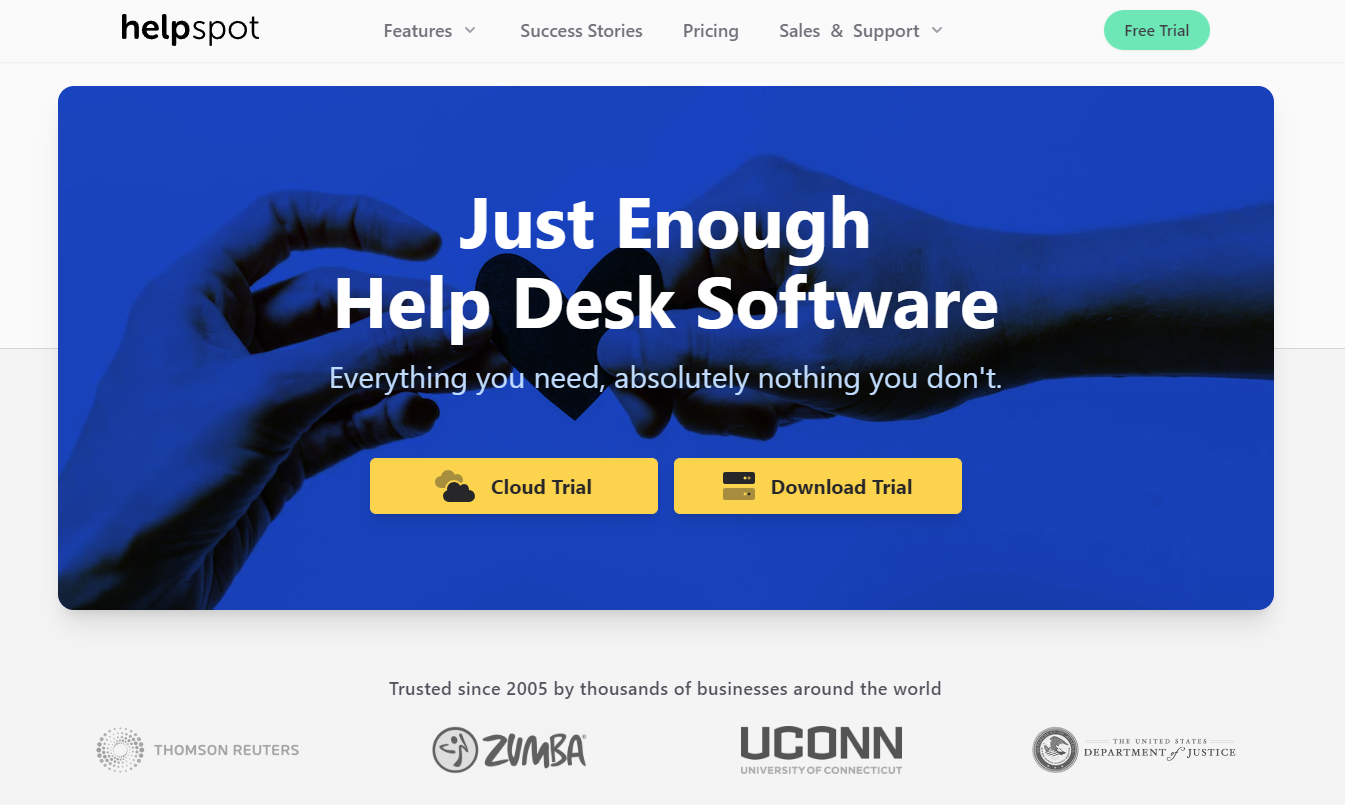
HelpSpot is a low-cost help desk software with all of the features you need for clear ticket management. The HelpSpot interface is set up like a typical email inbox, making it easy for agents to learn the software without setting aside time for training. Most teams can set up and start using HelpSpot on the same day.
We also offer a free plan of our on-premise (downloadable) help desk: It supports three agents, allows you to connect up to three mailboxes, and includes a knowledge base and forum-based support.
Note: HelpSpot is available in both on-premise and cloud-based versions. You can also access HelpSpot via mobile app**, available for both iOS and Android*.* Pricing is the same regardless of how you run our help desk software*.*
When you log in to your help desk, you’ll see the central inbox; this is where all incoming tickets appear. HelpSpot supports unlimited email accounts, so if you manage support requests from more than one email address, you can connect all accounts and consolidate tickets in the help desk. From this dashboard, you can view new tickets and assign requests to yourself or other agents.
We’re also one of the most affordable multi-brand help desk providers — you can use our multi-brand functionality to create dedicated dashboards for incoming requests and manage tickets by brand or department. This makes it easy for large companies that operate under multiple brand names to separate support tickets, but it’s also convenient for smaller organizations that just want to organize support requests by user group or department (e.g., internal vs. external; IT support vs. customer experience). More on this later.
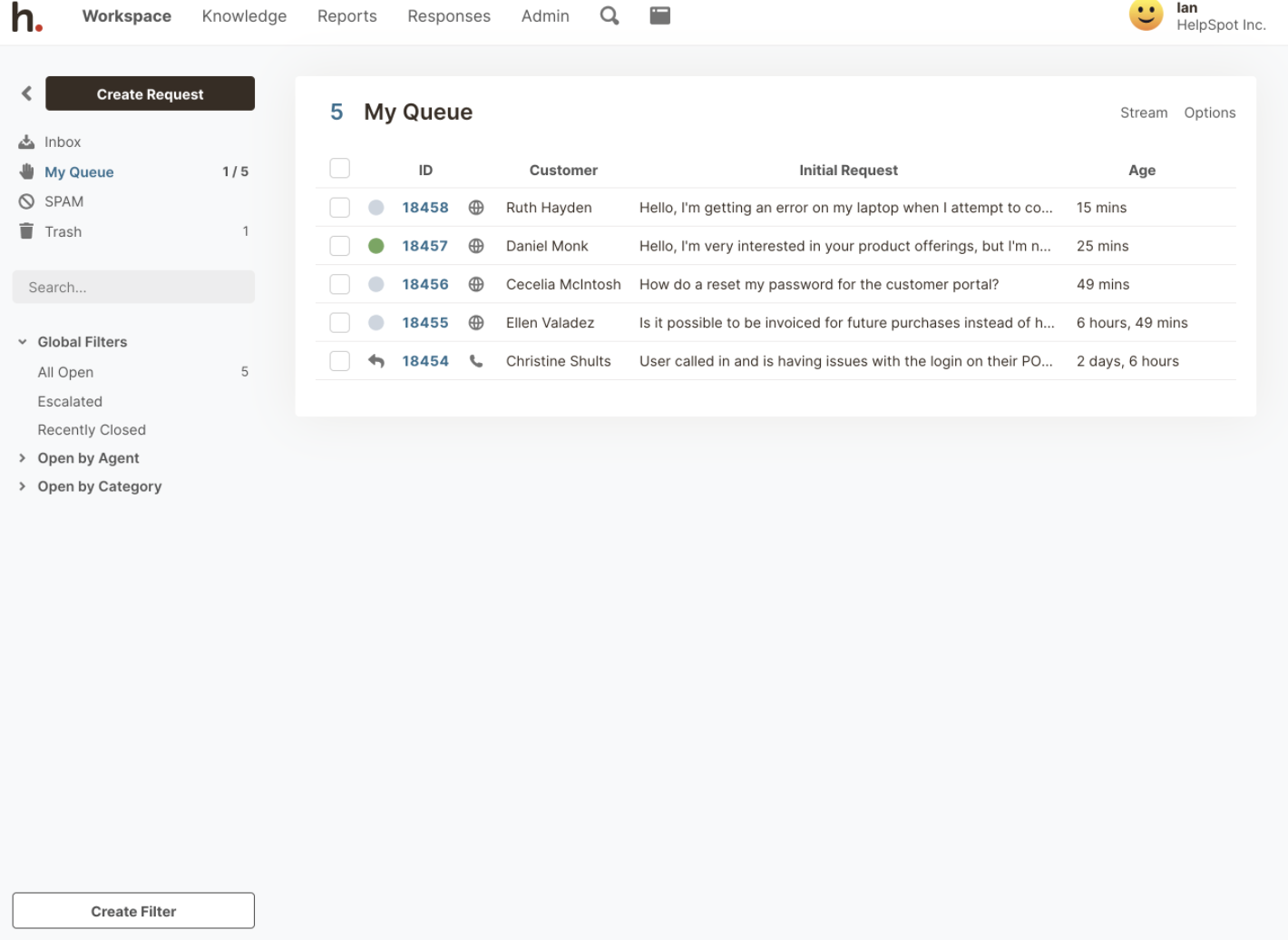
Unlike many free help desks, HelpSpot has triggers and automation rules to save you time on tedious tasks. These are based on an if/then framework — for example, you could create a rule that says IF a ticket is categorized under “IT Support,” THEN it’ll automatically be routed to one of your IT staff. You can use these rules to automate ticket routing and escalations, manage SLAs, and send canned replies to common requests.
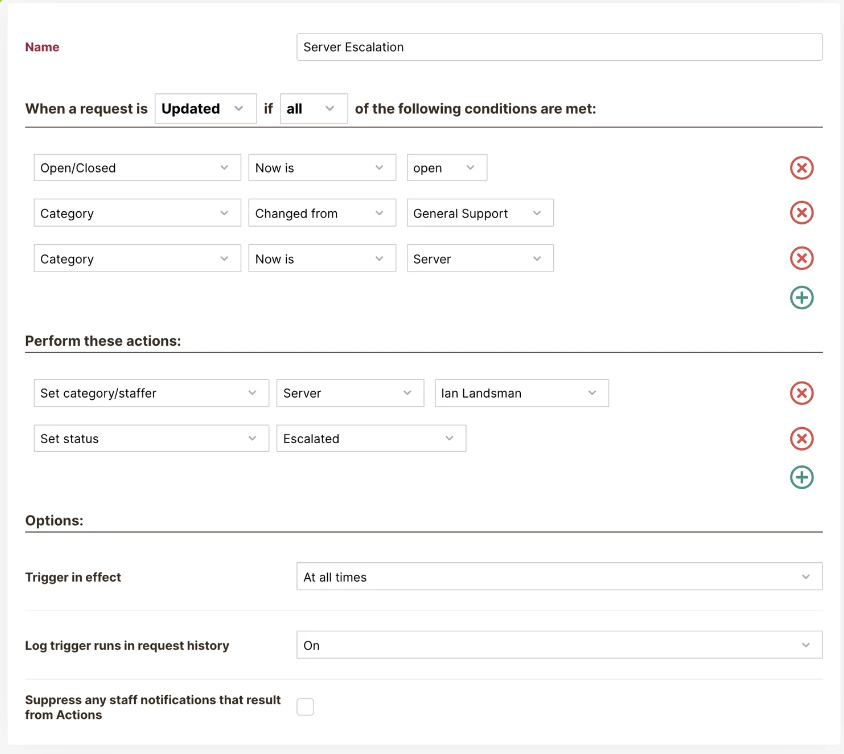
Read more: The Best Team Inbox Management Solution (Hint: It’s Not Using Folders)
HelpSpot’s templates and canned replies prevent you from having to write out repeat answers to support requests. You can use templates to write entire replies (for example, to notify a customer that an agent is looking into the issue and will reply shortly) or just sections of a reply (like a list of steps to troubleshoot a tech issue).
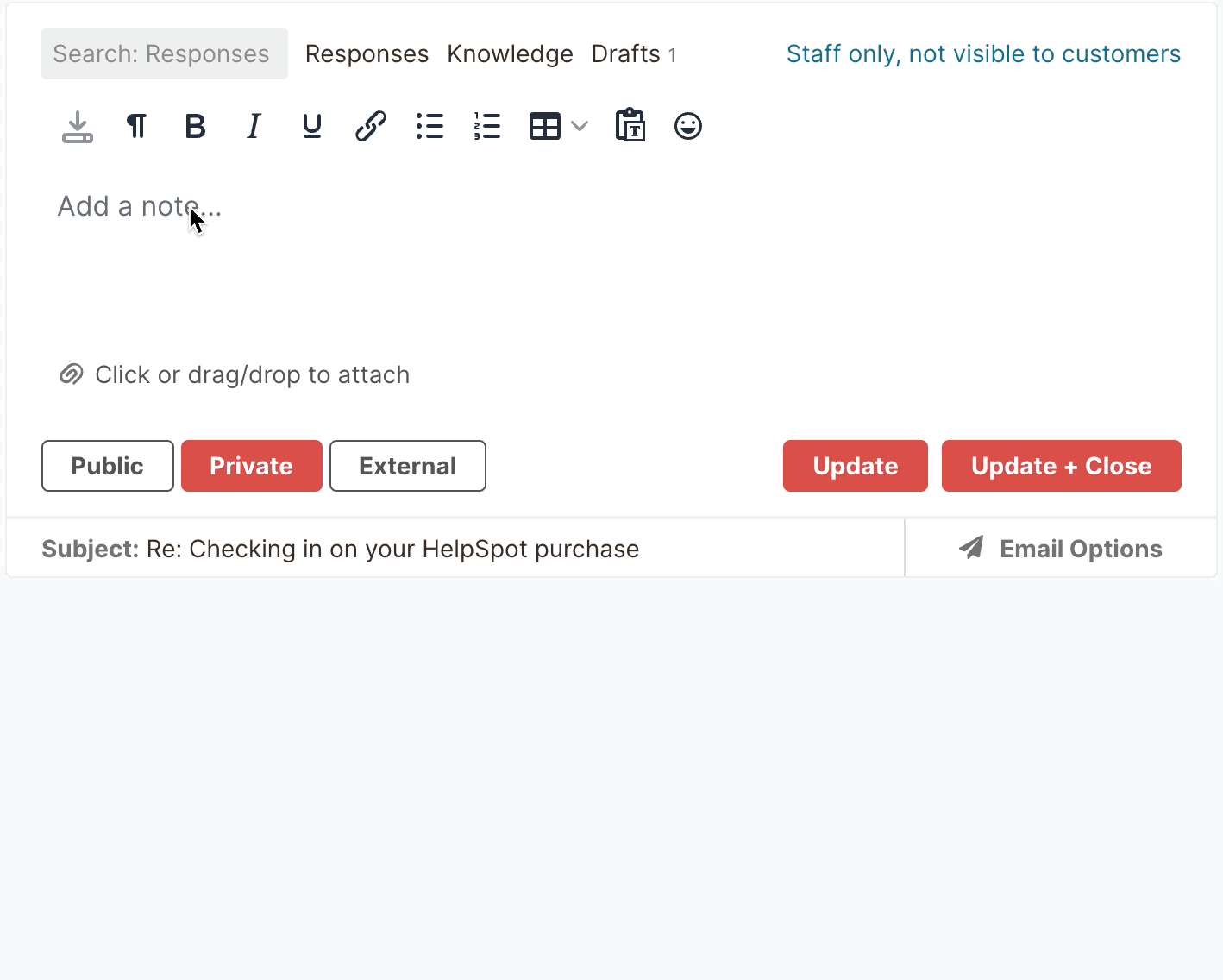 Canned responses can include text, web links, and document attachments. They can also automatically change the category of the ticket. For example, if you insert a response that outlines your exchange policy, the ticket would automatically be labeled as ‘Exchanges’.
Canned responses can include text, web links, and document attachments. They can also automatically change the category of the ticket. For example, if you insert a response that outlines your exchange policy, the ticket would automatically be labeled as ‘Exchanges’.
Not only do canned responses help your team save time, but they also help you stay consistent with company messaging and improve accuracy. For example, if you update company policies, you can edit canned responses to reflect changes and ensure that everyone is sharing accurate information with customers.
HelpSpot also has a help desk knowledge base where you can store critical policy information, troubleshooting documentation, FAQ guides, and other resources agents need for their roles.
Building out the knowledge base enables agents to do their jobs more efficiently because they can find answers to questions without reaching out to other staff — all troubleshooting information is easily available. Agents can also insert knowledge base resources in customer replies to easily provide detailed answers to common questions (and this also speeds up response times).
Team collaboration in free email accounts like Gmail is virtually impossible without creating dozens of threads or jumping over to a messaging app and communicating privately. So teams often experience confusion and wasted time when they need input from coworkers on requests. That’s why HelpSpot lets users comment back and forth within the ticket interface. With clear labels like public, private and external, you’ll always know who can see notes. Plus, notes are saved on the ticket so other agents can jump in and see the entire history.
HelpSpot also offers a collision detection feature that sends real-time notifications when other agents are viewing or working on the same ticket as you, which is helpful in preventing duplicate or contradictory work.
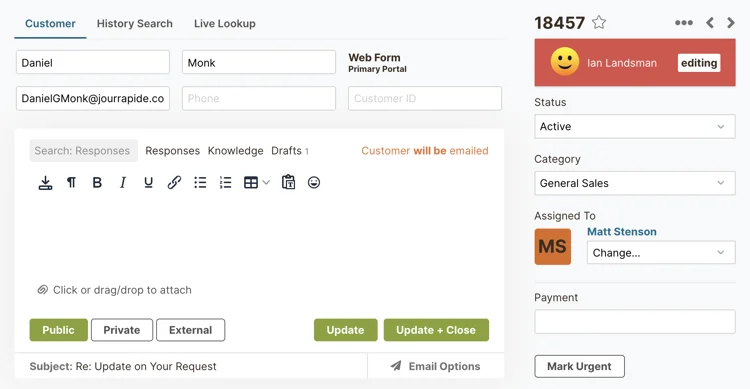
With HelpSpot, you can set up self-service support portals where users can look up troubleshooting resources or submit tickets to customer support.
The customer portal includes:
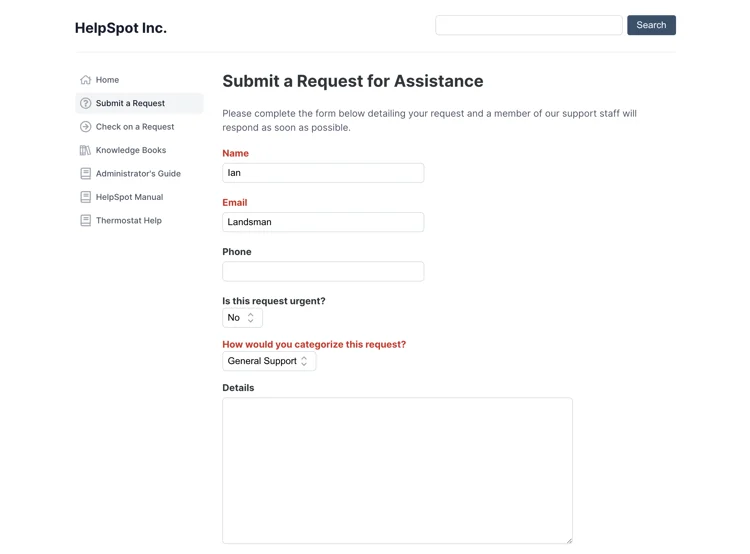
Companies that manage multiple brands often need separate email addresses, inboxes, self-service customer portals, and knowledge bases for each brand. However, multi-brand companies often run into one of three downsides with most help desk solutions:
HelpSpot provides true multi-brand support by letting you create dedicated inboxes, customer portals, internal knowledge bases, canned responses, and more for each of your brands.
You can manage all of your brands from one HelpSpot instance, and we give you full control over the visual appearance of your customer support portals and email templates so you can customize each with unique branding elements. Plus, we don’t charge extra to use the feature — set up as many brand portals as you need without fees.
Read more: 6 Features You Need in a Global Support Desk | HelpSpot
HelpSpot automatically tracks common KPIs and builds at-a-glance reports so you can monitor:
HelpSpot’s help desk reports are fully customizable**:** You can filter reports by date, department, agent, category, etc. to analyze different data sets. We show you raw data for each report, but also display data as a graph or chart. Then you can save custom reports to your dashboard for quick access in the future.
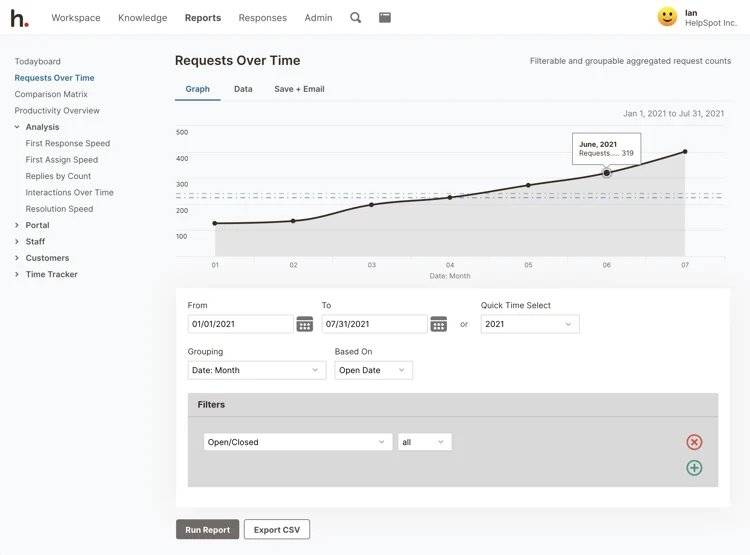
With help desk reporting metrics, you can track agent performance and pinpoint challenges that slow agents down or complicate workflows. For example, if you notice longer response times for a certain request category, you can dig into customer questions and provide more resources for agents. Or, if you notice a high volume of tickets in certain departments, you can hire or reassign agents to assist where needed.
Read more: Help Desk Reporting: Key Support Metrics and How to Use Them
HelpSpot offers essential help desk features at an affordable and simple pricing plan: Choose the number of seats you need and upgrade as your team grows.
All agents have access to the same features, and we don’t charge extra for support, customization, integrations, or advanced tools like multi-brand support.
Sign up for a 21-day trial to try HelpSpot risk-free — no credit card required.
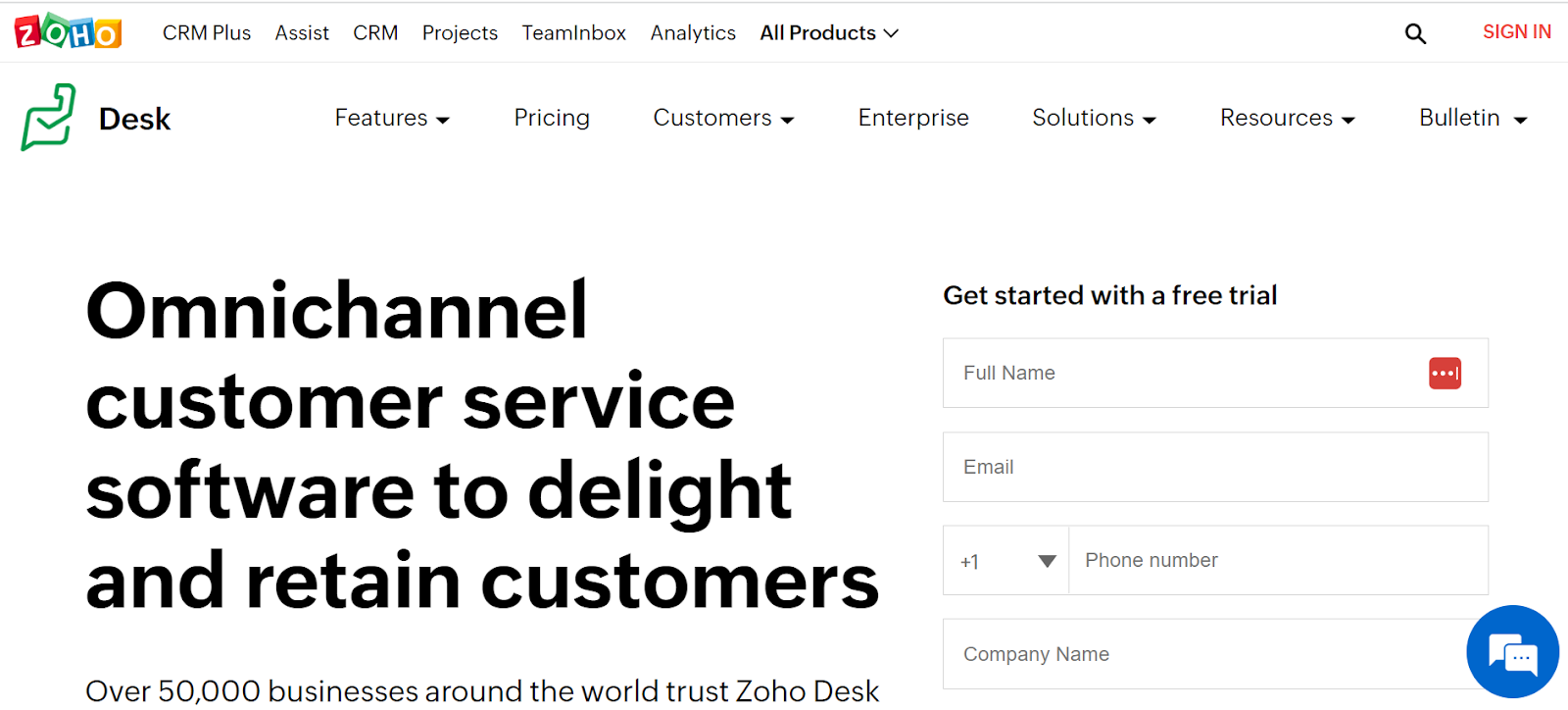
Zoho Desk is part of the Zoho ecosystem so it may be a good choice for teams already using these software solutions.
Pros:
Cons:
Read more: Zoho Desk Alternatives | Top 8 Help Desks for Customer Service
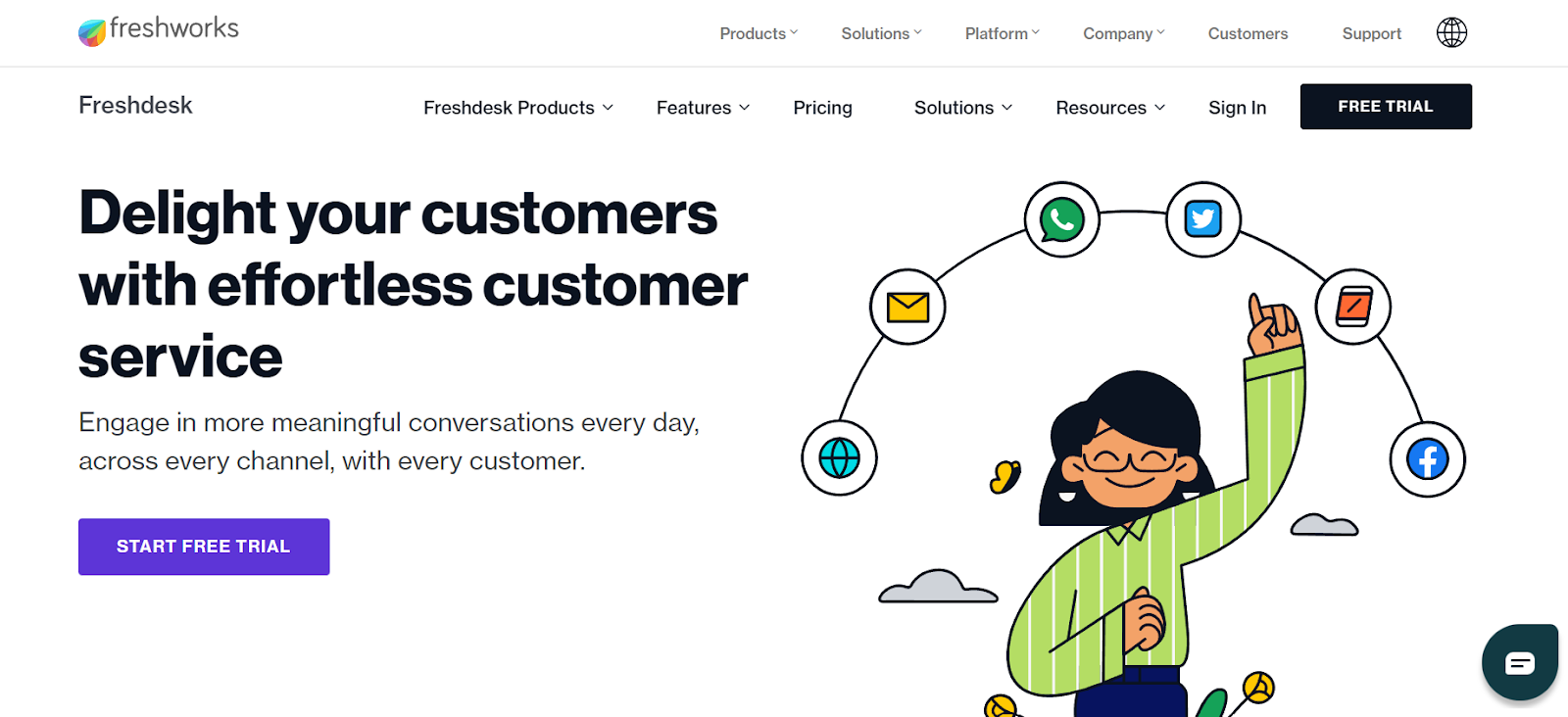
Freshdesk offers tons of advanced features, which can be good or bad depending on your business needs. They also offer a free help desk product for small teams.
Pros:
Cons:
Read more: Freshdesk Alternatives: 9 Help Desk Software for Support Teams
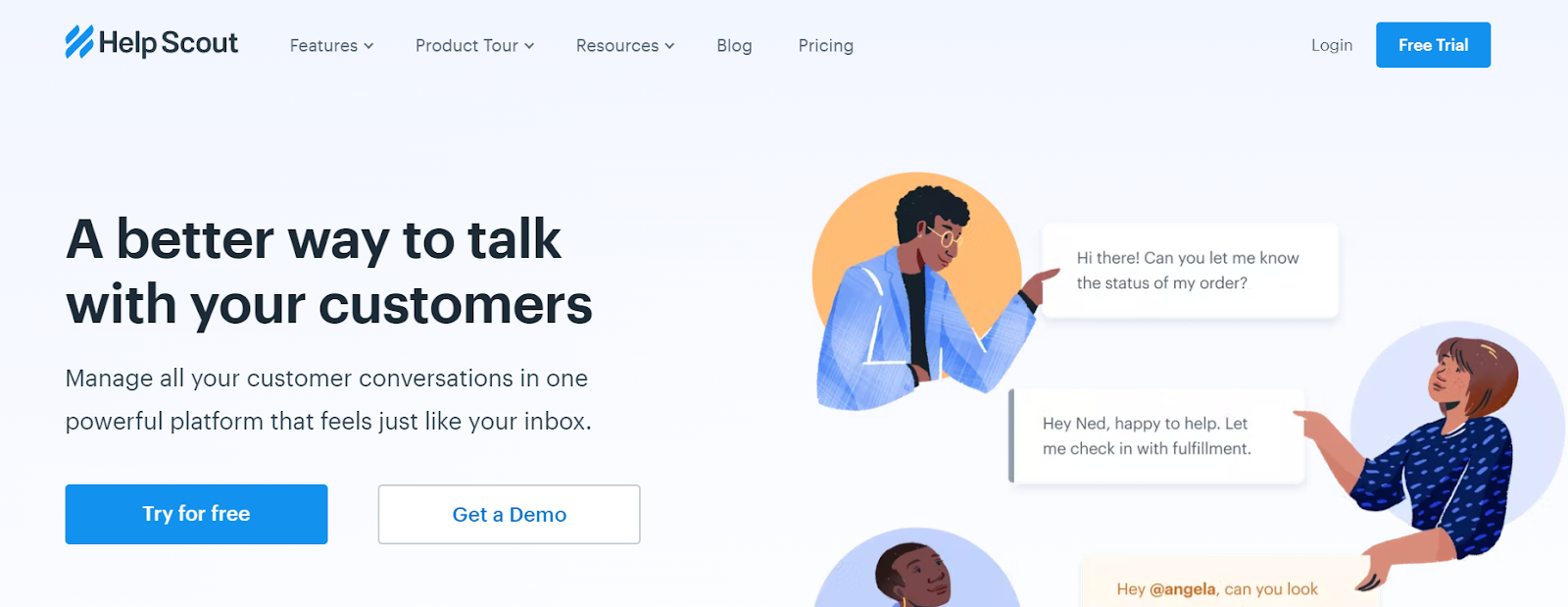
Help Scout is a simple help desk software for customer support teams that need one system to manage email, phone calls, and live chat.
Although Help Scout is more affordable in comparison to other multi-channel help desk software, they don’t offer a free plan and might not be a preferred solution for small businesses. Help Scout may be a better option for midsize companies that are willing to pay for simplicity done well.
Pros:
Cons:
Read more: Help Scout Alternatives: 6 Best Help Desks for Support Teams
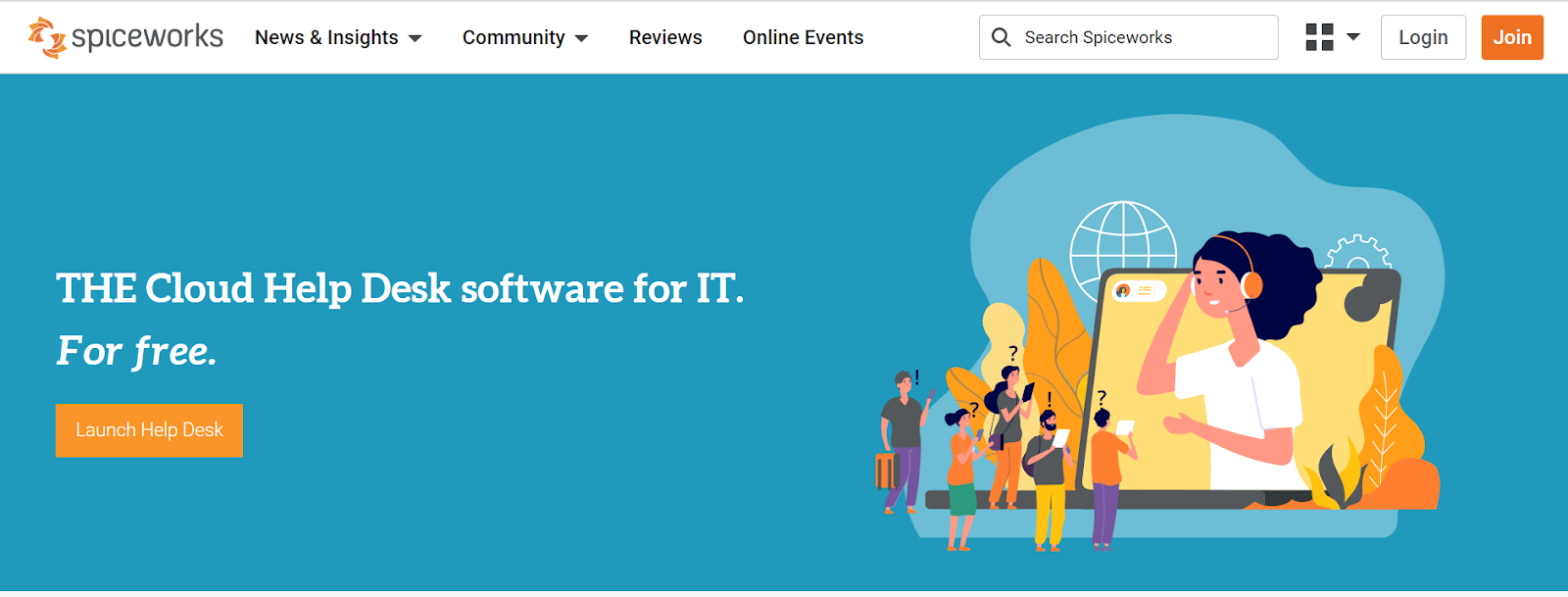
Spiceworks is an entirely free help desk tool, but the platform is supported by ads, which slow down workflows and clunk up the UI.
Pros:
Cons:
Read more**:** Spiceworks Alternatives: Help Desk, Asset Tracking, and Network Tools
At $14 per agent per month, HelpSpot is a great low-cost help desk platform because:
Sign up for a free 21-day trial or download the free version of our help desk to get started.
